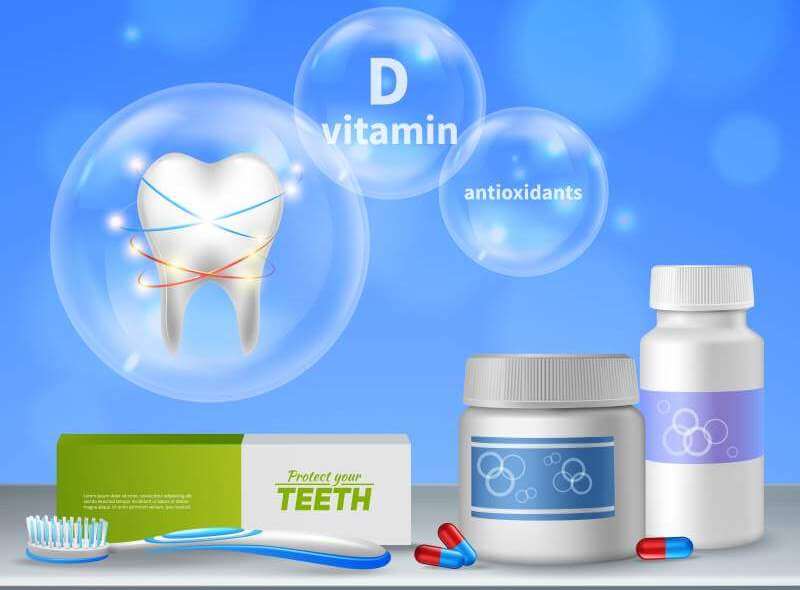Practicing good dental care habits is a sure-fire way of making your teeth and gums healthy and happy. After all, a bright smile goes far beyond enhancing your looks because it is also a sign of good overall health.
Basic dental care includes proper brushing, flossing, going on regular dental visits, following a tooth-friendly diet, and avoiding behaviors that are detrimental to your oral health. But all this hard work can become useless if you don’t use the right oral care products. From toothpastes to mouthwashes, here is a guide to making the right choice.
Toothpaste

Brush vector created by macrovector – www.freepik.com
The number of options for toothpaste can be overwhelming. As a rule, the essential ingredient you should look for in a high-quality toothpaste is fluoride. This naturally occurring mineral helps protect your teeth from the acid released by the bacteria in your mouth as they feed on the starches and sugars left after eating. Fluoride basically works two ways: it makes the tooth enamel stronger and reverses acid damage.
In addition to fluoride, there are other ingredients your toothpaste must have. These include:
- Abrasive agents – Silicates, calcium carbonates, and other scratchy materials help remove bacteria, food, and stains from your teeth.
- Humectants – Both gel and paste formulations contain humectants like glycerol primarily for moisture retention, so the toothpaste doesn’t dry out.
- Detergents – Sodium lauryl sulfate and other detergents make the suds each time you brush your teeth.
- Thickeners – These agents will maintain the proper toothpaste texture.
- Flavoring – Saccharin and other artificial sweeteners are added to improve the taste of the toothpaste. Though most people are familiar with mint, toothpastes (especially those for kids) are available in different flavors, such as bubblegum, lemon-lime, and cinnamon.
Whether it’s a paste or gel, spearmint or wintergreen, always choose a toothpaste with fluoride. If your teeth are sensitive, or if a specific ingredient bothers you, try another product (or better yet, you can ask your dentist for a recommendation).
Toothbrushes
When selecting the best toothbrush, bristles are the most important considerations. Opt for soft bristles, especially if you have sensitive gums or teeth. Stiff or hard bristles tend to cause damage to your mouth and are often ineffective at removing stains or plaque.
The head size is another consideration. Choose one that fits your mouth easily to ensure that it reaches all areas in your mouth.
As for the handle of the brush, choose one with a non-slip grip or whatever that is comfortable for you.
Though regular toothbrushes clean your teeth better than powered toothbrushes, the latter are the healthier option for people who need help when brushing. These include people with braces, uneven or misaligned teeth surfaces, or arthritis or any condition that limits mobility.
Most importantly, replace your toothbrush or the head of your powered brush every three months or when the bristles have worn out. Otherwise, it won’t do a great job at keeping your teeth plaque-free. Also, you must replace your toothbrush after suffering from an illness.
Dental floss
When choosing the right dental floss, it is a matter of trial and error. All four common types of floss can effectively remove plaque. Whether you choose to use an unwaxed floss, an electric flosser, a shred-resistant floss, or a woven floss, studies have shown that all these types showed considerable plaque removal as opposed to brushing alone. It only depends on what you like and need.
- Thicker floss is for people with large gaps in between their teeth, while thinner floss is recommended for tighter or smaller spaces between teeth.
- Waxed floss can make flossing more comfortable, especially for those with braces. Unwaxed floss, on the other hand, is preferred by some individuals for the squeaking sound it makes at it cleans the teeth.
- Single filament floss glides easier and is less prone to tearing, while multifilament floss sometimes wears off quickly if tartar is evident or filings aren’t adapted between teeth.
Mouthwashes
Generally, there are two types of mouthwashes: therapeutic and cosmetic. Therapeutic mouthwashes provide long-term bacterial reduction, while cosmetic mouthwashes temporarily control bad breath.
The type of mouthwash you should use depends on your oral health goals.
- A cosmetic mouthwash is your go-to solution if you want to freshen your breath, perhaps because you have an important meeting to attend.
- A mouthwash that provides oral comfort for several hours is your best choice if you are suffering from dry mouth, which can be the side effect of medication you are taking.
- For other conditions like gingivitis, receding gums, and plaque buildup, you should use mouthwashes that contain fluoride, chlorhexidine, and other active ingredients that kill bacteria.
- Mouthwashes with essential oils like eucalyptus, thyme, and peppermint are excellent choices as well because of their antibacterial and antifungal properties.
Using the right dental equipment – from the toothpaste to toothbrush to floss to mouthwash – is an excellent habit, along with paying regular visits to a dental clinic, knowing the proper way of brushing and flossing your teeth, and determining what food to eat and avoid. So make sure to buy the right oral care essentials to ensure a pearly white smile and a healthy mind and body.
If you are still unsure about what to use, consult your dentist to figure out the best-suited dental products for you and your family.
